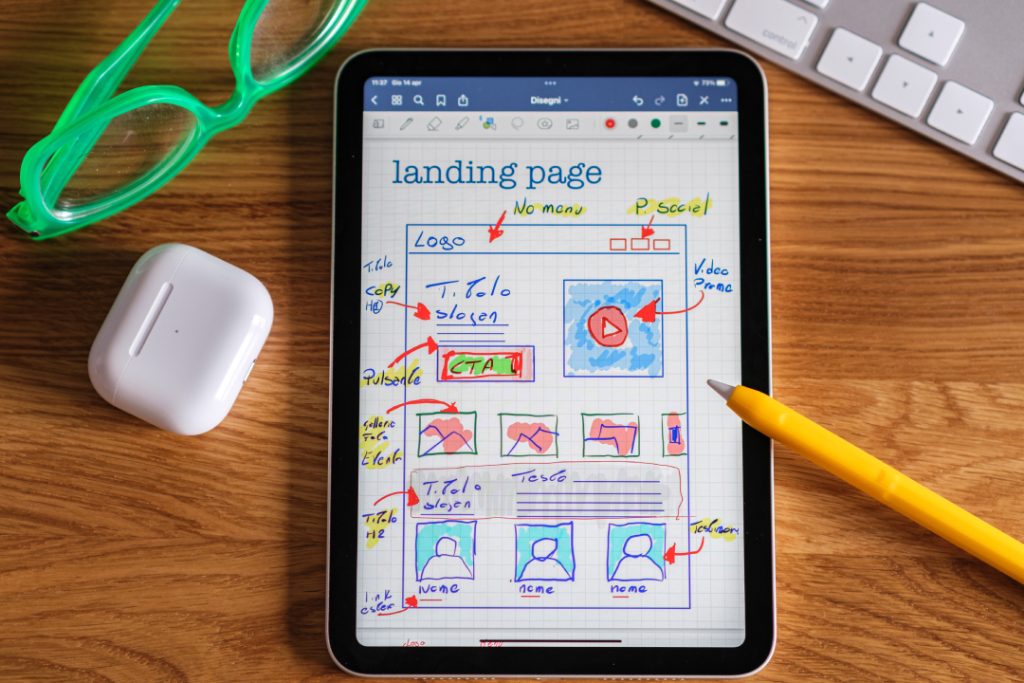Mastering the Art of Web Design with a Visual HTML Editor: Tips and Tools
- Posted on
- By Justin Imperial
- In General,

Overview of Visual HTML Editor
Without needing to write code manually, a developer is able to create stunning websites and applications using a visual HTML editor. Using a visual editor, a developer can manage the interface, design elements, and customize pre-designed templates and blocks to make attractive websites. Visual HTML editors or also WYSIWYG HTML editors are great for developers who want to create these web pages fast without needing to manually code each element. If you also lack extensive coding knowledge or expertise regarding developing web pages, visual HTML editors are perfect for you. By utilizing these tools, users can save time and focus on what’s important, the design and the content of their websites.
Explanation of what a visual HTML editor is
If you still don’t now what a visual HTML editor is, it is basically a tool which allows developers to create and edit web pages through visual means using a GUI. Instead of manually typing every code, a developer is able to utilize buttons to manipulate the elements on the page. This optimizes web design for individuals who lack technical skills or developers who want to work fast and efficiently.
This is done by converting the user’s input from the GUI into HTML and CSS code. For example, when a user drags and drops an element onto a page, the editor automatically generates the proper code for it. It offers lightweight customization as well such as the ability to customize the element such as color, font, position and many more. Subsequently, the editor generates and applies the appropriate CSS to the elements.
Perhaps, one of the most important features of a visual HTML editor is it provides an intuitive and graphical interface to its user. This enables non-technical users to create pages easily. This tool is perfect for small business owners, bloggers or anyone who wants to create a website for personal use but lacks resources to hire a professional. Instead of putting effort in learning to various languages mainly HTML and CSS with structured markup, they can focus on creating content.
Importance of using a Visual HTML editor
A visual HTML editor simplifies the process for users who lack the technical skills to write code. With these editors, they are able to create professional and attractive web pages without having to write any code as it provides a user-friendly interface. The interface gives the user a lot of options to customize the elements. With professional looking websites, visitors are more likely to stay longer resulting in increased engagement and higher conversion rates. Professionals and freelancers also establish credibility and build brand recognition easily with a professional website.
And if you’re an experienced web developer you will still benefit tremendously from a visual editor. HTML editors save time and effort and still able to produce amazing results. By being letting the HTML editor write simple code for them, developers can focus on the more complicated areas of the website.
Pros and Cons of Visual HTML Editors
Though we may be building up and heavily praising visual HTML editors, there are still pros and cons to these tools.
Pros:
- User-Friendly Interface: An intuitive interface enables users to create web pages easily. They have buttons and visual editor icons to help users easily navigate to certain features.
- Time-Saving: Editors eliminate the need for users to manually write code, thus saving time. It also have pre-designed blocks of code that developers can use.
- Customization: Users can customize their web pages’ such as its fonts, colors, images, and even use fruit grid layouts with ease.
- Accessibility: Web design is made accessible to non-technical users since they are able to create professional web pages without the need of a professional web developer.
- WYSIWYG: Using a “What You See Is What You Get” approach, users are able to preview their work.
Cons:
- Limited Control: Editing of codes may sometimes have certain limitations and restrictions. This becomes a challenge when implementing a very specific design that is not built-in to the editor.
- Bloated Code: Sometimes the code generated is bloated an inefficient and can cause your website to be slower.
- Compatibility Issues: The editors can generate code that is not compatible with certain platforms such as browsers or devices.
- Security Risks: They also may introduce security risks if they generate code that has vulnerabilities. It is highly advised to add cloud security features.
- Learning Curve: Though HTML editors are mostly user-friendly, there is still a learning curve to it. Navigating through the application and installing certain features still requires learning and reading the documentation.
Tips for Using a Visual HTML Editor
Here are some tips and best practices to follow when using a visual HTML editor:
- Organize Design Elements: It’s important to organize design elements for efficient use by grouping similar elements together. Use labels as well to help identify elements on your page. This makes it easier to edit.
- Understand the Basics of HTML and CSS: Even though HTML editors eliminate the need for manual coding, it still vastly helps having a slight understanding about HTML and CSS. This will also help you when you get stuck help you produce better projects.
- Utilize Templates and Pre-Designed Blocks: Learn to take advantage in using pre-designed templates and blocks that can be used as a starting point. This is better than having a blank canvas and no ideas whatsoever. This not only saves time but helps the website maintain a consistent theme and design.
- Avoiding Bloat: Despite having the HTML editor generate code for you, that shouldn’t stop you from auditing its code making sure it’s optimized. You can do this by selecting only the necessary design elements, compressing images, and avoiding unnecessary scripts and plugins. Always delete unnecessary plugins. Also, make sure to also use SEO so your pages rank in search engines. Sometimes you need to do this manually but it will vastly help your website.
- Testing Across Devices and Browsers: After you design your website, make sure to test it across major devices and browsers. This ensures that your pages will function as intended and your visitors will have a better user experience.
Top Visual HTML Editors on the Market
Numerous visual HTML editors are available and each of them having their own unique features. They also vary in cost. Some are completely free, while some have limited options for the free version, and others are paid. Here are some of the popular editors.
- Froala – Froala is one of the best editors at customizing web pages with its simple and user-friendly user-interface. It includes an intuitive toolbar which you can use to make lists, tables, and more. Not only that, you can further customize it with plugins. It also compatible with all major browsers and frameworks. Froala has a Free trial and it’s Basic plan is $299 a year.
- TinyMCE – TinyMCE was designed with accessibility. It has features like WAI-ARIA support and keyboard shortcut for your users that have disabilities. TinyMCE’s Core plan are free while its Essential starts at $37.5 a month with a 14 day trial.
- CoffeeCup – CoffeeCup is another popular option with a wide range of choices. Plus, it has a Components Library to update certain elements everywhere saving you time. It’s pricing varies depending on how many copies and which version you get.
Visual HTML Editor Chart Comparison
Here’s a comparison chart of the editors mentioned:
| Editor | Features | Pricing |
|---|---|---|
| Froala | Intuitive user-friendly WYSIWYG interface, can be customized with plugins to add more functionality | Basic Plan at $299/year |
| TinyMCE | Customizable rich text editor, has great features for accessibility | Core is free with Essential at $37.5/month |
| CoffeeCup | WYSIWYG interface with a Components Library to allow you to update elements everywhere on your webstime | Pricing varies |
By comparing the features and pricing options of each editor, you can choose the right one that meets your specific needs and budget.
Conclusion
So here’s a quick recap. Visual HTML editors increase efficiency by helping users create and edit pages quickly and easily without code knowledge. It also helps design as you have at your fingertips a range of customizable features, templates and pre-designed blocks of code that help you produce interactive and attractive web pages. These editors also simplify development as they allow users manage the interface and organize its design elements faster. Lastly, it enhances functionality if you add SEO tools, plugins, analytics and many more to your project.
It’s important to consider you and your projects needs when choosing a visual HTML editor as well as the budget. Some editors like Wix and Squarespace make it easy to make web design with its user-friendly interface but it comes at a cost. While others like WordPress are free but may require more technical knowledge but also provide more customization features for advanced developers.
Whatever you choose, remember to use best practice, take advantage of features like templates, and understand a little bit of HTML and CSS to make beautiful web pages.
Justin Imperial
Justin is a web developer, writer, graphic designer and everything in between! He loves technology, philosophy, astronomy and more. He loves learning new thins and his curiosity is insatiable. On his free time, you can find him isolating himself while reading a book or playing video games or out with his friends.
-
Hide Show







No comment yet, add your voice below!